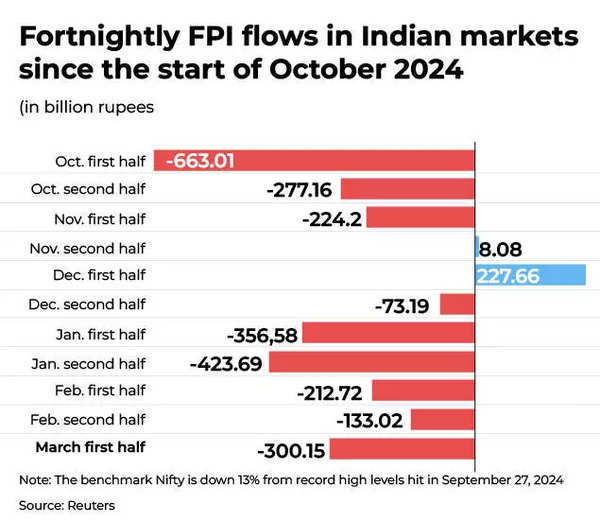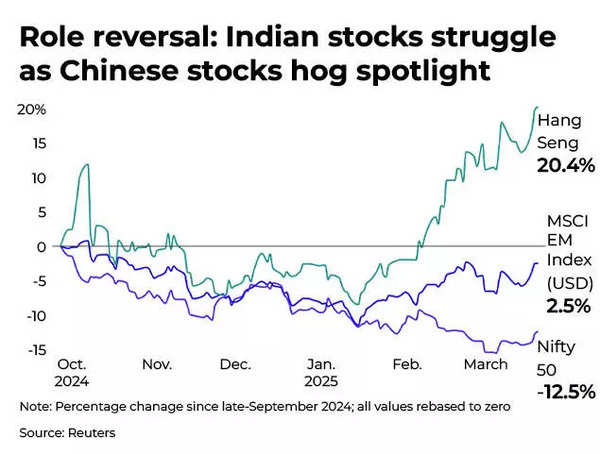Shares of Reliance Industries Limited on Monday (April 28) jumped nearly 4% after the firm reported a 2.4% rise in March quarter net profit.
The blue-chip stock climbed 3.60% to ₹1,346.90 on the BSE.
At the NSE, it surged 3.58% to ₹1,347 apiece.
The stock emerged as the biggest gainer among the Sensex and Nifty firms.
The 30-share BSE benchmark gauge jumped 778.49 points to 79,991.02 in morning trade. The NSE Nifty rallied 219.45 points to 24,258.80.
Reliance Industries Ltd. on Friday (April 25) reported a 2.4% rise in March quarter net profit as store rationalisation in retail business and improved margins in telecom helped offset weakness in mainstay oil and petrochemicals business and higher finance cost.
Consolidated net profit of ₹19,407 crore, or ₹14.34 per share, in January-March — the fourth quarter of April 2024 to March 2025 fiscal (FY25) — was higher than ₹18,951 crore, or ₹14 a share, in the same period a year back, the company said in a statement.
Profit was also up sequentially from ₹18,540 crore in the October-December quarter.
Annual profits were almost unchanged at ₹69,648 crore but the oil-to-telecom-and-retail conglomerate became the first company to hit a networth of over ₹10 lakh crore in 2024-25. Last year, it became the first company to hit a market cap of ₹20 lakh crore.
In the fourth quarter, increased subscriber base led to higher earnings in the telecom business while a rationalisation of stores and pick up in quick commerce improved retail metrics. The oil-to-chemicals (O2C) business however saw pre-tax earnings fall on lower fuel cracks and polyester chain margins.
The profit before tax (EBITDA) rose 3.6% to ₹48,737 crore. This was despite an almost 7% rise in finance cost due to higher debt (₹3.47 lakh crore as of March 31, 2025, compared to ₹3.24 lakh crore a year back).
Jio Platforms Ltd, the unit that houses the telecom and digital businesses, saw profits rise by 26% to ₹7,022 crore in Q4 and 22% in full-year (₹26,120 crore).
Published – April 28, 2025 11:58 am IST








































